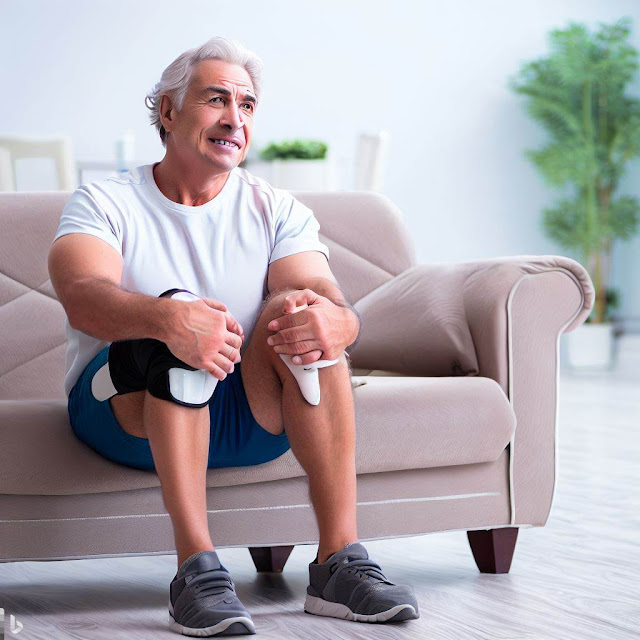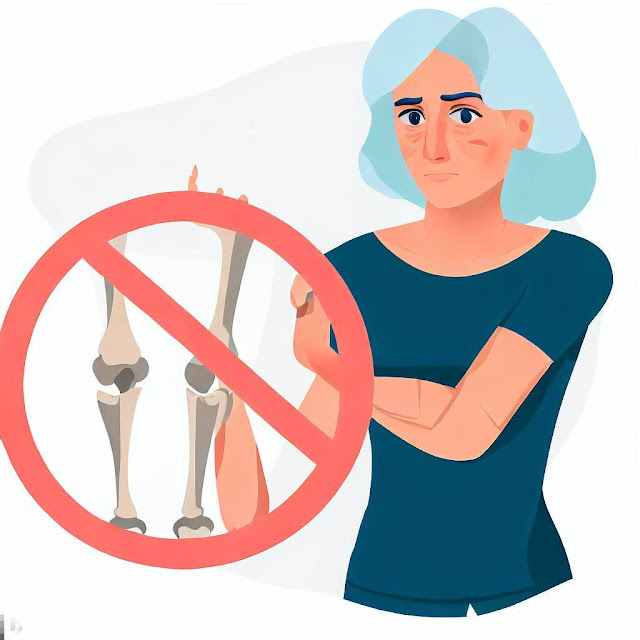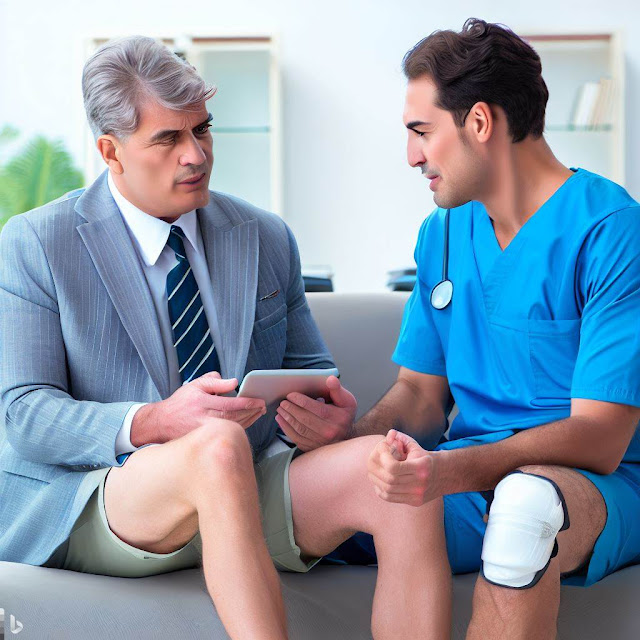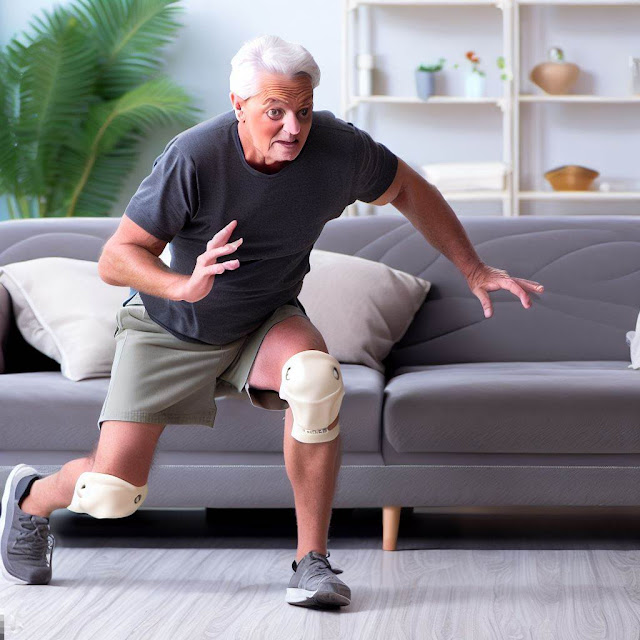After knee replacement, many patients hope to regain their mobility and lead pain-free lives. However, there are common mistakes that can hinder the recovery process.
In this article, we will discuss the top 5 mistakes made after knee replacement surgery and provide essential insights into ensuring the best possible outcome.
We'll also explore what the worst day after knee replacement feels like, the best sitting position, two critical exercises, permanent restrictions, life three months post-surgery, and practical tips for getting down on the floor and sleeping comfortably.
Table of Contents
- The Worst Day After Knee Replacement
- Best Sitting Position After Knee Replacement
- Two Critical Exercises for Optimal Recovery
- Permanent Restrictions After Knee Replacement
- Life Three Months After Total Knee Replacement
- Getting Down on the Floor After Knee Replacement
- How to Sleep Comfortably After Knee Replacement
The Worst Day After Knee Replacement
Recovering from knee replacement surgery is a journey, and the first few days can be challenging.
It's essential to understand that discomfort is normal, and it's not uncommon for patients to experience their worst day shortly after the operation.
On this day, you may encounter swelling, pain, and difficulty moving your knee.
This is because your body is adapting to the changes, and it's essential to manage these symptoms effectively.
Managing Pain Effectively:
- Pain management is crucial during this period. Your surgeon will prescribe pain medications, and it's essential to take them as directed.
- Ice packs can help reduce swelling and alleviate pain. Apply them to the surgical area for 20-30 minutes at a time, several times a day.
- Elevating your leg can also help reduce swelling and improve blood circulation. Use pillows to keep your leg comfortably elevated.
When to Seek Medical Attention:
If you experience severe pain, excessive swelling, fever, or any signs of infection, contact your healthcare provider immediately.
Early intervention is essential to address potential complications.
Best Sitting Position After Knee Replacement
Proper sitting posture plays a significant role in your recovery after knee replacement surgery.
The 90-90 rule is your best friend: when sitting, keep your hip and knee at approximately 90-degree angles to minimize stress on your new knee joint.
The 90-90 Rule:
- Use a chair with good back support and armrests. Avoid low, soft sofas or chairs that make it challenging to rise.
- Sit back in the chair, ensuring your back is well-supported. Your feet should rest flat on the ground.
- Maintain the 90-degree angle at your hip and knee, with your surgical leg positioned comfortably.
Using Cushions and Supports:
You can enhance your comfort by using cushions or pillows to support your back and knees.
Placing a small cushion under your surgical leg can relieve pressure and discomfort.
Avoiding Cross-Legged Sitting:
Crossing your legs after knee replacement surgery can strain the joint and hinder your recovery.
Always keep your legs uncrossed to maintain proper alignment and minimize stress on your knee.
Two Critical Exercises for Optimal Recovery
Early mobility is crucial for a successful recovery. Your physical therapist will guide you through exercises tailored to your needs, but two exercises are particularly critical:
Quadriceps Strengthening Exercises:
These exercises target the muscles at the front of your thigh. They help provide stability and support to your new knee joint.
Straight leg raises and quad sets are common exercises to strengthen your quadriceps. Perform them as instructed by your physical therapist.
Knee Flexion Exercises:
Flexion exercises help improve your knee's range of motion. Knee slides and heel slides are examples of exercises that can gently increase your knee's flexibility.
Consistency is key. Perform these exercises daily to see improvements in your knee's mobility.
The Role of Physical Therapy:
Physical therapy is an integral part of your recovery. Regular sessions with a qualified therapist will help you regain strength and mobility safely.
They will customize exercises to suit your progress and needs, ensuring a smoother recovery journey.
Permanent Restrictions After Knee Replacement
While knee replacement surgery can significantly improve your quality of life, it's essential to have realistic expectations about permanent restrictions:
Realistic Expectations:
You may experience some limitations in high-impact activities like running or jumping. Consult with your surgeon regarding the level of activity that's safe for your new knee joint.
Impact on High-Impact Activities:
Activities that place excessive strain on your knee joint should be avoided.
opt for low-impact exercises like swimming or cycling for cardiovascular fitness.
Precautions for Long-Term Joint Health:
Protect your knee by maintaining a healthy body weight and avoiding excessive stress. Your surgeon can provide guidance on protecting your knee joint in the long term.
Consultation with Your Surgeon:
Regular follow-up appointments with your surgeon are essential. They can assess your progress, address any concerns, and provide guidance on maintaining your knee health.
Life Three Months After Total Knee Replacement
Approximately three months after your knee replacement surgery, you'll likely notice significant improvements in your mobility and overall quality of life. Here's what to expect:
Gradual Improvement in Mobility:
As you continue with your physical therapy and exercises, you'll notice a gradual improvement in your knee's strength and flexibility.
Many patients can return to light activities like walking, swimming, and low-impact exercises at this stage.
Transitioning to Normal Activities:
While you may not be back to your pre-surgery level of activity, you'll be able to engage in everyday tasks with greater ease.
Household chores, shopping, and simple recreational activities become more manageable.
Maintaining a Healthy Lifestyle:
Continue to prioritize a healthy lifestyle. Eating well and staying active are essential for your overall well-being and knee health.
Consult with your healthcare provider about any specific dietary or exercise recommendations.
Follow-Up Appointments:
Regular follow-up appointments with your surgeon and physical therapist are vital during this phase.
They will monitor your progress and make necessary adjustments to your rehabilitation plan.
Getting Down on the Floor After Knee Replacement
Returning to activities like getting down on the floor may be a goal for many individuals after knee replacement surgery.
Here are some tips to help you achieve this safely:
Safety Precautions:
Make sure your knee is adequately healed and your physical therapist approves before attempting to get down on the floor.
Always have someone nearby to assist you in case you need help.
Using Supportive Furniture:
Start by sitting on a stable and firm chair or sofa with armrests.
Place a sturdy cushion on the floor to provide support and cushioning for your knee.
Step-by-Step Instructions:
1. Begin by sitting on the edge of the chair or sofa.
2. Slowly swing your surgical leg out while maintaining proper alignment.
3. Lower yourself onto the cushion, ensuring that you control the descent with your non-surgical leg.
4. Use your arms to support your body weight as you lower yourself gently.
Avoiding Sudden Movements:
Be cautious of sudden movements that can strain your knee. Move slowly and deliberately when getting down and up from the floor.
How to Sleep Comfortably After Knee Replacement ?
Quality sleep is essential for the healing process. After knee replacement surgery, it can be challenging to find a comfortable sleeping position, but here's how you can improve your sleep:
Importance of Quality Sleep:
Adequate rest is crucial for your body's recovery. It helps reduce inflammation and promotes healing.
Poor sleep can exacerbate pain and discomfort, so finding a comfortable sleep position is essential.
Ideal Sleeping Positions:
Sleeping on your back with a pillow under your surgical leg can provide support and maintain proper alignment.
Some individuals find sleeping on their non-surgical side with a pillow between their knees to be comfortable.
Using Pillows for Support:
Experiment with different pillow placements to find what works best for you. Pillows can provide additional support to reduce discomfort.
Bed Adjustments and Accessories:
If possible, invest in an adjustable bed that allows you to elevate your legs slightly. This can relieve pressure on your knee.
Mattress toppers and supportive pillows can also make your sleep more comfortable.
Conclusion :
Recovering from knee replacement surgery can be a challenging yet rewarding journey.
By avoiding common mistakes, understanding the worst days, maintaining proper sitting posture, and engaging in critical exercises, you can optimize your recovery.
While there are some permanent restrictions, life three months after surgery can significantly improve.
Safely getting down on the floor and sleeping comfortably are attainable goals with the right precautions.
Remember, consult with your healthcare team for personalized guidance, and be patient with yourself as you work toward a pain-free, active life after knee replacement.
1. What are the common mistakes after knee replacement surgery?
Answer:
Common mistakes include not managing post-operative pain effectively, neglecting physical therapy, and not following recommended sitting and sleeping positions.
2. What is the worst day like after knee replacement?
Answer:
The worst day after knee replacement surgery can involve swelling, pain, and difficulty moving the knee. It's crucial to manage pain and follow your surgeon's guidance.
What is the best sitting position after knee replacement surgery?
Answer:
The best sitting position is following the 90-90 rule, where your hip and knee are at approximately 90-degree angles. Use chairs with good back support and avoid crossing your legs.
What is the best sitting position after knee replacement surgery?
Answer:
The best sitting position is following the 90-90 rule, where your hip and knee are at approximately 90-degree angles. Use chairs with good back support and avoid crossing your legs.
What are two critical exercises after knee replacement?
Answer:
Two critical exercises include quadriceps strengthening exercises and knee flexion exercises. These help in building strength and improving mobility.
How can I manage pain effectively after knee replacement surgery?
Answer:
Pain management includes taking prescribed medications, using ice packs, and elevating your leg. Follow your surgeon's recommendations for pain relief..

























